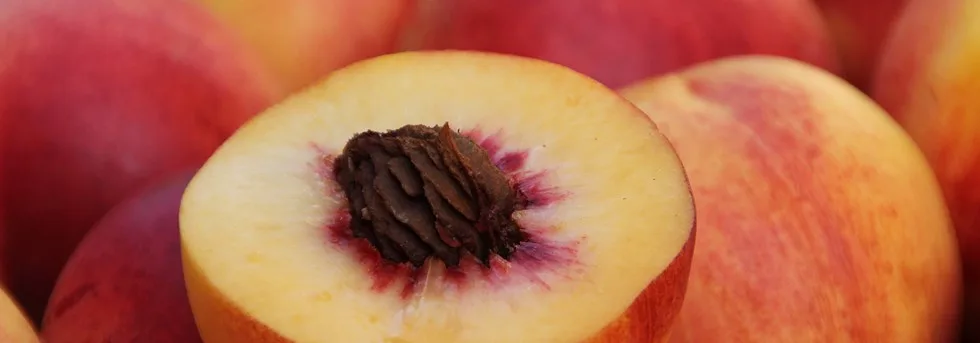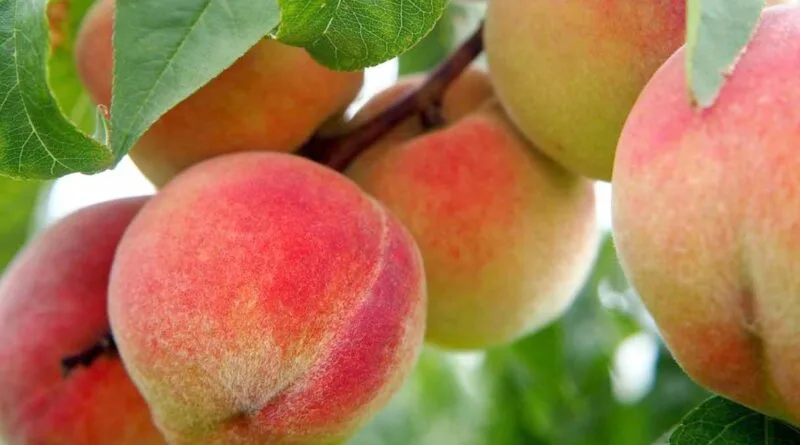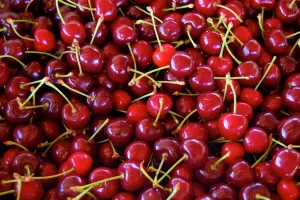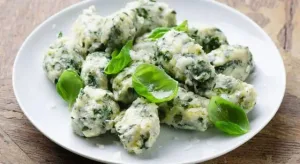With the arrival of summer, the markets of the Staffora Valley fill up with a fruit that is the symbol of sweetness and freshness: the peach.
This popular fruit has a thousand years of history and a unique flavour that makes summer even more delicious.
Cultivated mainly in the Bagnara area, peaches are renowned for their sweet and juicy flavour. They are characterised by their tender and fragrant flesh, which melts in the mouth and has a unique flavour. They have been grown in the Staffora Valley since ancient times.
Flavour and versatility
A symbol of longevity, the Staffora Valley peach is prized for its particular sweetness. They can be enjoyed fresh or used in many sweet and savoury recipes. A versatile ingredient, peaches are used to make jams, cakes, ice cream and much more. They are rehydrating, thirst-quenching and rich in simple sugars and potassium, making them an excellent energy and wellbeing supplement to recharge after sport or sunbathing.

A pleasant end to a meal
A summer dinner in the Staffora Valley often ends with a cup of muscatel and peach. A combination that creates a perfect harmony between sweetness and fragrance, a true marriage of flavours that enhances the characteristics of both products. The peaches, ripe but still firm, are immersed in Moscato wine, absorbing its aromas and enriching their natural flavour with a delicate, enveloping note. The result is an explosion of sweetness and freshness that will satisfy even the most demanding palates. The fruit can be peeled or left in its skin, according to personal preference.
A triumph of sweetness
Staffora Valley peaches are also enjoyed in other preparations. One of the most common is peaches in syrup. But peaches are also cooked in wine, enriching them with an aromatic and alcoholic note. They can be served alone as a dessert or accompanied by a light cream or vanilla ice cream for an even more delicious touch. To make the dish even more special, they can be garnished with fresh mint leaves. Lovers of sweets and authentic flavours appreciate Oltrepadane peaches in cakes, tarts, mousses and ice cream.
Muscat production
The production of Muscat requires the utmost care and meticulous selection of grapes. The winemakers devote a great deal of attention to the care of the vineyards, using sustainable cultivation methods and respecting the traditions handed down through the generations. The vines are cultivated using manual techniques, with careful management to obtain superior quality grapes.
History and tradition
Moscato is one of the oldest grape varieties in existence. It has oriental origins. Some studies point to the Caucasus region as the grape's birthplace, while others suggest Asia Minor as a possible area of origin. It is cultivated in several wine-producing regions of the world, with variations developing over time.
Over the centuries, the Muscat grape has undergone several migrations and adaptations to climatic conditions and production areas. Its organoleptic characteristics make it ideal for the production of sparkling or sparkling wines. The latter are obtained by refermentation in autoclaves.













